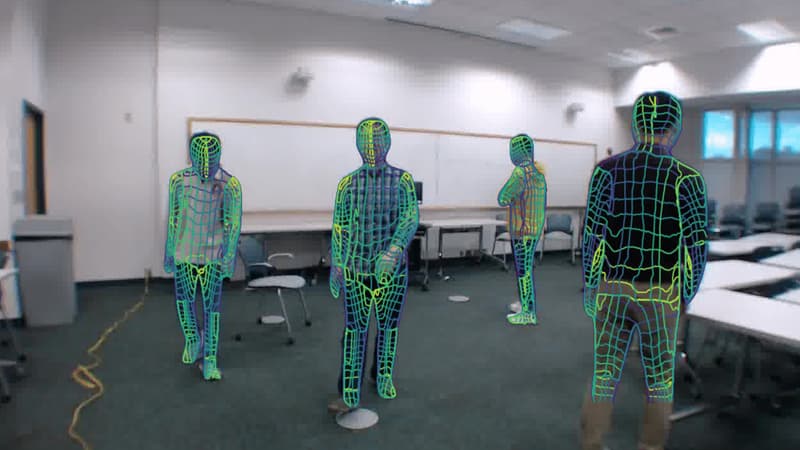It’s hard to know whether to marvel or care about this feat. Researchers at the American University of Carnegie Mellon (Pennsylvania) have succeeded in identifying and modeling bodies behind a wall, simply using Wi-Fi waves from inexpensive commercially available routers. With a concept similar to that of a radar: measuring minute variations of a Wi-Fi signal when it passes through a living being to deduce the latter’s shape and movements.
As the Vice site recounts, they used a tool called DensePose, developed by Imperial College London, Facebook AI and University College London, which allows mapping bodies in 3D. They then calculated “the amplitude of the Wi-Fi signals sent and received by the routers” to get a picture, they specify in their study. Clearly, cameras, lidar or radar are not needed: their experience allows bodies to be displayed in their exact position with surprising precision.
Detect intrusions
For researchers, this feat brings several advantages: the routers used (TP-Link) cost about thirty euros, very little compared to thermal cameras or Lidar systems. Also, brightness has no impact on Wi-Fi, though it can often mess with the quality of a video.
Paradoxically, in his idea, this method could respond to privacy issues: instead of placing cameras to monitor elderly and frail people, it would suffice to use the home’s Wi-Fi. The result would be slightly less intrusive because it is not an accurate image that is delivered, the authors explain.
The researchers also cite “suspicious behavior at home” without specifying their mindset. Of course, we can easily imagine the connected home capable of detecting intrusions. Of course, this technology also paves the way for increased surveillance with a bewildering simplicity that perpetrators will find it hard to tear themselves away from.
Source: BFM TV


